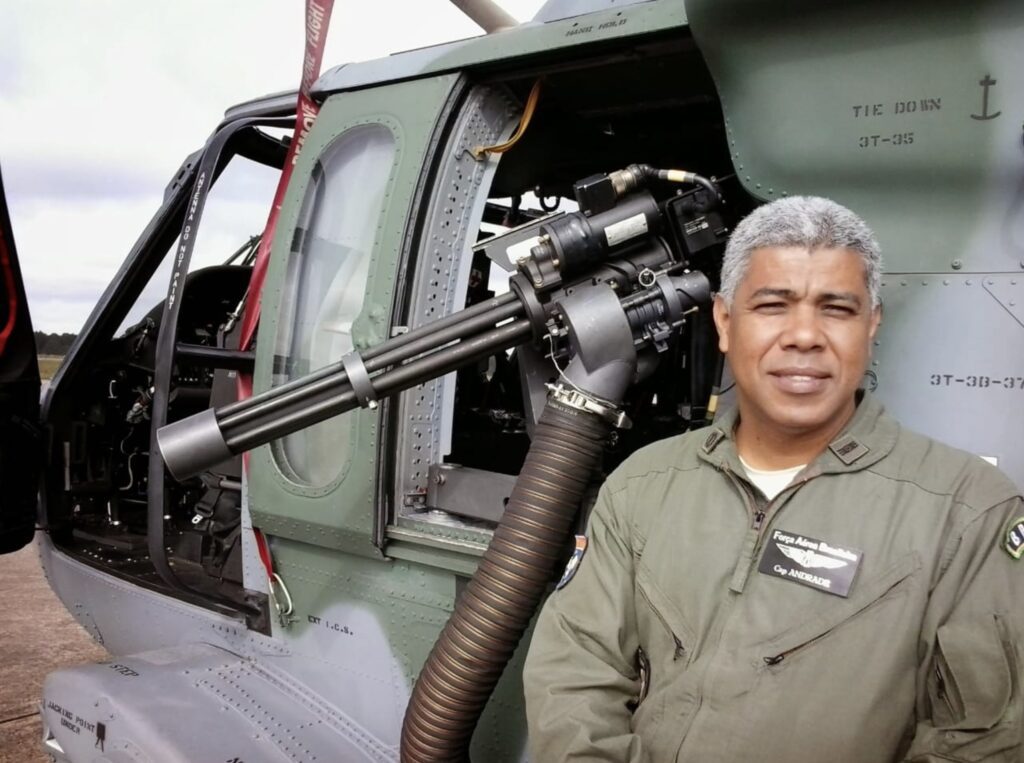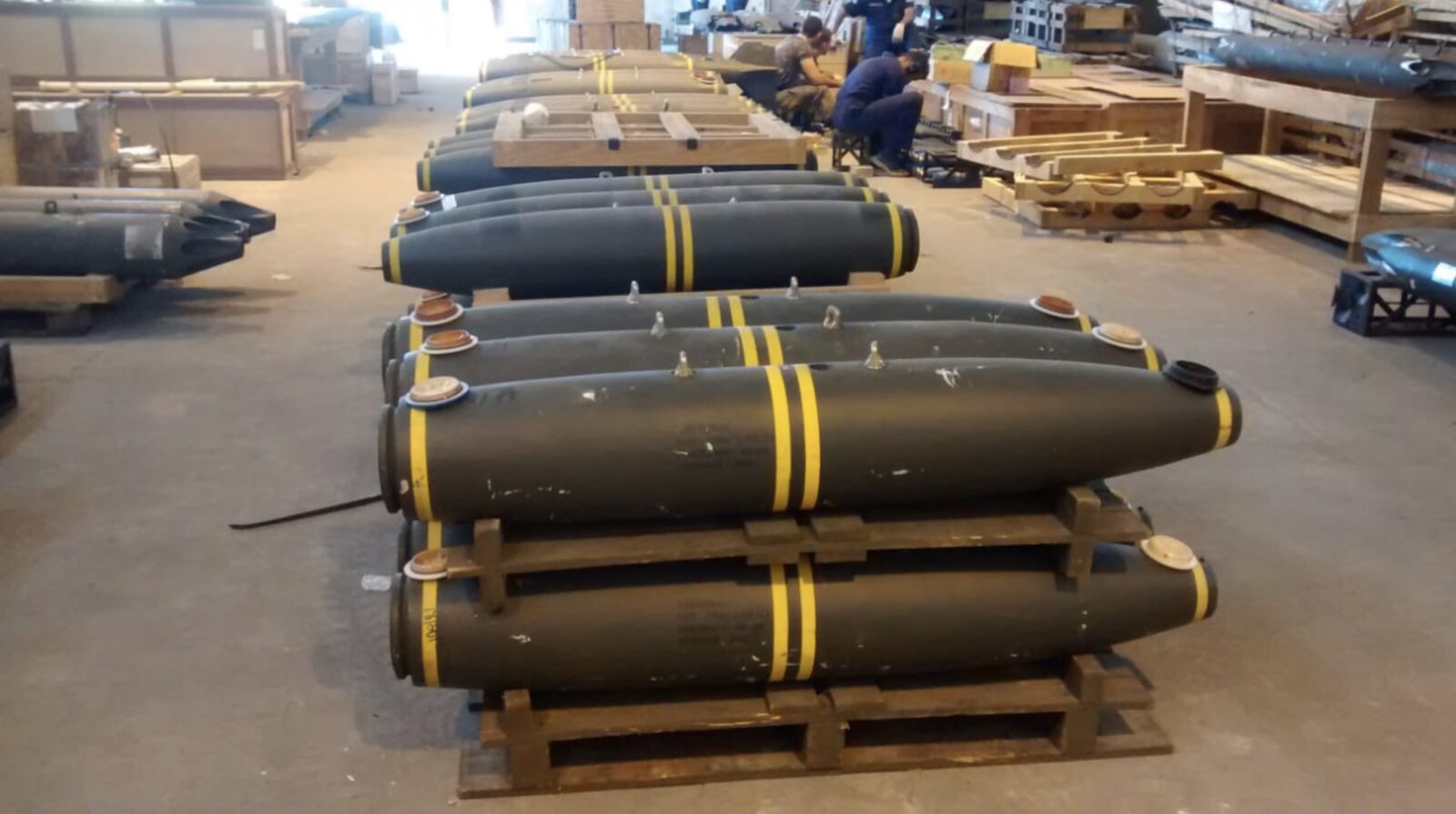Aircraft ordnance day is celebrated on November 11th
by Lieutenant Johny Lucas and Air Force Agency
Celebrated on November 11, this year the Aeronautics War Material Day celebrates 78 years of history. It was in 1944, in Tarquinia, Italy, during World War II, that the First Fighter Aviation Group (1st GAVCA) flew, for the first time, as an independent unit, using only Brazilian pilots and the P-47 Thunderbolt aircraft¹, also armed and prepared by Brazilian military personnel.
The War Material Specialist is responsible for the technical services of maintenance, storage and installation of air and ground war materials. With the arrival of the F-39 Gripen, the new supersonic aircraft of the Brazilian Air Force (FAB), the ordnance continues to evolve with the most advanced technologies, considerably increasing the firepower of the Force, such as the acquisitions of new armaments and GPS-guided bombs.
Weapons Specialists in FAB
Lieutenant-Colonel Cláudio Cézar dos Santos Andrade, from the Aeronautical Material Park of Rio De Janeiro (PAMB-RJ), began his career in the Air Force as a student at the Aeronautical Specialists School (EEAR), in 1990. A few years later, in 2004, he took the Specialists Officer Training Course (CFOE), being approved and initiated in the Officership in 2005.

The Officer says that there is no Military Organization that doesn’t have ordnance available, be it for guarding and security, team training, or air defense. “In PAMB we train professionals in the Demolition Material Handling Course (CMMAD) and in the Course on Neutralization and Destruction of Explosive Ordnance (CNDAEX). These two trainings are held after the Basic Formation in Military Materiel (BMB) and are aimed at Officers and Graduates from the various Forces and also from the Public Safety agencies,” he highlighted.
Also according to the Lieutenant-Colonel, the work done by the BMB professional requires care and attention, because he works both in Air Units (Air Armament) and in Land Armament Sections (SAT). “We are talking about equipment and materials that require specific instruction and great care in handling, in order to be operated and maintained. The focus is always on safety. Any carelessness will certainly have unpleasant consequences that can lead to an accident. The BMB acts operationally from the aerial employment, in the logistical support for the acquisition of parts and services, until its neutralization, when the useful life cycle ends”, he emphasized.

The Santa Maria Air Force Base (BASM) Control Section Chief and Weapons Specialist, Lieutenant Edison Ferreira, says that his military career began in 1993, when he joined the FAB as a soldier. In 1996, he took the Corporals Training Course at EEAR, graduating as a BMB Specialist. Two years later, in 1998, he was approved for the Sergeants Training Course (CFS). In 2019, he started the Officer Training Program (EAOF), in the Armament specialty.
According to the Officer, his function as a manager is to control the weapons collection of the BASM as well as the management that enables the preparation and employment of weapons by the air units. “Since the beginning until today, there have been countless functions, courses, and maneuvers directly related to war activities, demonstrating the dynamism and plurality that involve the responsibilities of the Weapons Specialist. From handling a 9mm cartridge to preparing a laser-guided bomb (LIZARD 2), the military contributes significantly to the Brazilian Air Force’s important constitutional role of defending the homeland,” he said.

Memory
In memory of Lieutenant-Colonel Jorge da Silva Prado, Patron of the Air Force ordnance, then lieutenant on November 11, 1944, the Air Force reveres its past heroes and prepares for the future. Thus, it cries out with the battle cry of the FAB Military Materiel, in honor of its day: From the Force, the Sabre!
FAB launches video in honor of the War Material Day:
Observation note:
¹The 1st GAVCA left Brazil with 350 men, including 43 pilots, and arrived in Livorno as part of the US Air Force’s 350th Fighter Group. Before that, the allied group had carried out Operation Torch, in North Africa, and went on to Italy. Besides the 1st GAVCA, there were three squadrons, all American: 345th, 346th and 347th Fighter Squadron. For them, the 1st GAVCA, equipped with P-47 Thunderbolt, was known as “1st Brazilian Fighter Squadron (1st BFS)”, with the code “Jambock”. From its base in Tarquinia, on Italy’s West Coast, the 1st GAVCA began planning its own operations on November 11. Brazil also sent a team of doctors and nurses to Italy, working with the Squadron and the US 12th General Hospital in Livorno.
*** Translated by the DEFCONPress FYI Team ***
